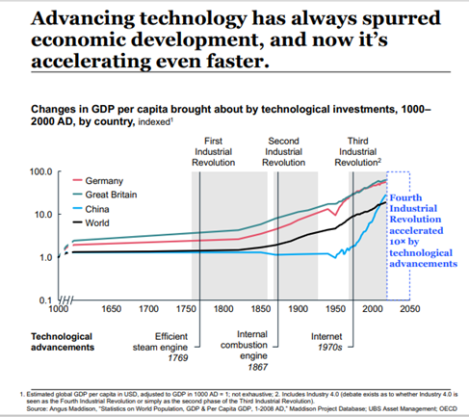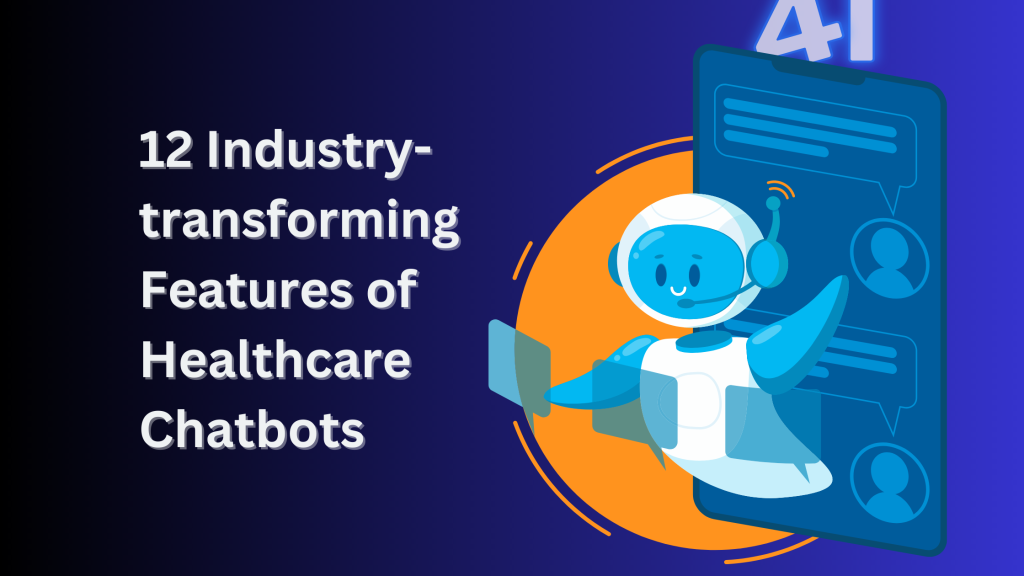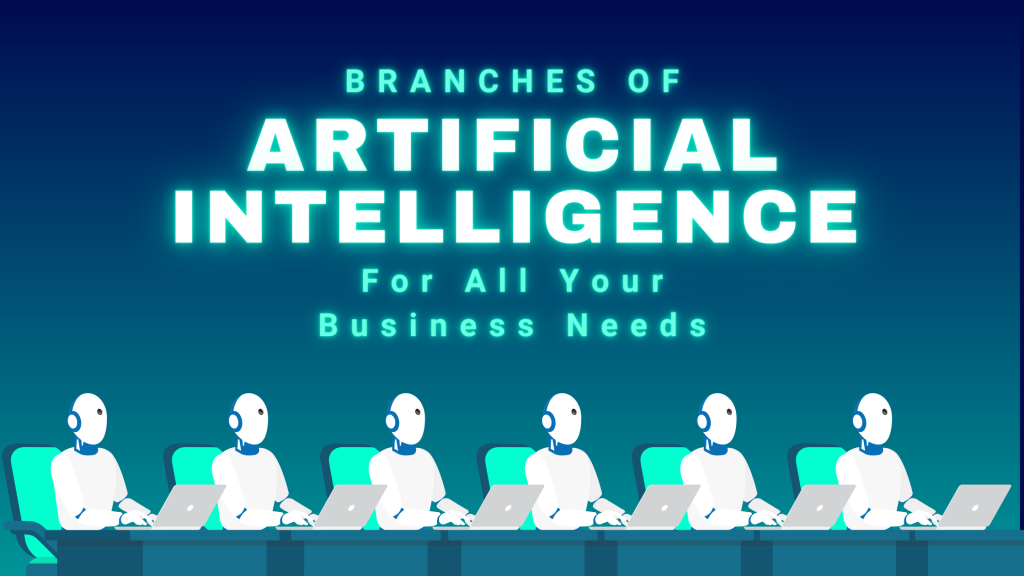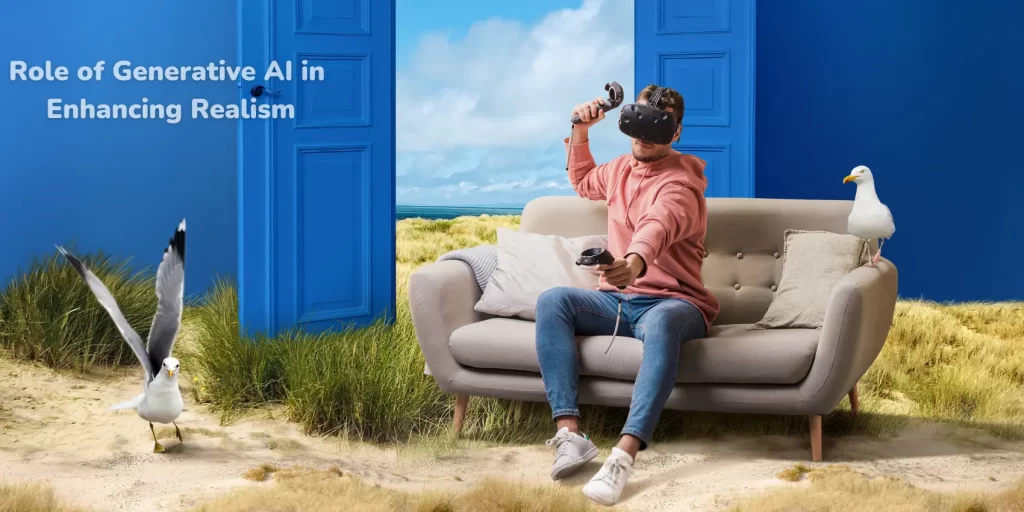The gaming industry has come a long way since its beginnings. From pixelated characters on arcade screens to lifelike 3D graphics and immersive virtual worlds with generative ai characters, gaming has evolved into a multi-billion dollar industry that captivates...
The gaming industry has come a long way since its beginnings. From pixelated characters on arcade screens to lifelike 3D graphics and immersive virtual worlds with generative ai characters, gaming has evolved into a multi-billion dollar industry that captivates players of all ages.
As per Future Business Insights, the global gaming market is projected to grow from $229.16 billion in 2021 to $545.98 billion in 2028 at a CAGR of 13.20%.
One especially interesting aspect that has gained increasing importance over the years is character creation. It is the ability of game developers to customize and personalize gaming avatars and has become a critical factor in player engagement and immersion.
In recent years, a groundbreaking technology called Generative AI has emerged, promising to revolutionize character creation in gaming. Generative AI combines the power of artificial intelligence and machine learning algorithms to create gaming generative ai characters whether, playable or Non-playable, ultra-realistic, and engaging. While it makes playable generative ai characters more personalized and adaptive to the gamer’s preferences, it makes non–playable characters or NPCs much more intelligent, interactive, and impactful.
Its potential impact is astounding, opening up a world of highly customized and immersive experiences for players. And that’s why we are here today, discussing all about Generative AI’s role in making the future of gaming come true.
First thing First, Understanding Generative AI

To comprehend the significance of Generative AI in character creation, it’s essential to understand its core principles and techniques.
Generative AI refers to a subset of artificial intelligence that focuses on creating new content rather than simply analyzing or reproducing existing data. It utilizes advanced algorithms and machine learning techniques to generate original and highly realistic outputs.
The technologies and techniques used in generative AI vary, but some common approaches include
Variational Autoencoders (VAEs):
VAEs help the system understand and recreate complex data like pictures, videos, or sounds. They can take a picture, for example, and turn it into a special code that represents the important parts of the picture. This code is called the “latent space.”
Later, the code is used to create a new picture that looks similar to the original one. But here’s the cool part: the VAE doesn’t just create an exact copy. It can make different variations and create new, unique pictures that we’ve never seen before.
This is possible because the VAE learns patterns and styles from the original pictures during training. It figures out the most common ways that pictures can be different, and it remembers that information in its “learned data distribution.” So, when we ask the VAE to create something new, it randomly picks different possibilities from what it learned, resulting in diverse and original content.
In a nutshell, VAEs are smart models that learn how to understand and recreate complex data. They can create new and unique outputs by using their knowledge of what they’ve seen before.
Generative Adversarial Networks (GANs):
Generative Adversarial Networks (GANs) are a popular technique used in AR. It consists of two components: a generator and a discriminator. The generator’s role is to create new samples, such as images, music, or text, while the discriminator’s role is to distinguish between the generated samples and real data.
The generator works by taking random noise as input and transforming it into new data that resembles the training examples it has seen. For example, if it has been trained on a dataset of celebrity faces, it will generate new faces that look like realistic celebrity portraits. The generator’s objective is to produce samples that are convincing enough to fool the discriminator.
The discriminator, on the other hand, acts as a binary classifier. It is trained on a dataset containing real examples and the generator’s creations. The discriminator’s task is to distinguish between the two and determine whether a given sample is real or fake.
Through iterative training, the generator and discriminator play a competitive game. The generator tries to produce samples that the discriminator will classify as real, while the discriminator aims to correctly identify the generated samples as fake. This back-and-forth process of training and adjustment helps both components improve their performance over time.
The ultimate goal is to reach a point where the generator produces highly realistic outputs that are indistinguishable from genuine data.
GANs have demonstrated remarkable capabilities in generating visually and audibly realistic content, such as photorealistic images, convincing speech, or even coherent text. Their ability to learn and recreate complex data distributions has led to significant advancements in fields like computer vision, natural language processing, and creative applications.
Recurrent Neural Networks (RNNs):
Recurrent Neural Networks (RNNs) are like smart computers that understand and work with things that come in a sequence, like sentences or musical notes. They can learn the patterns and structure of the sequence and then use that knowledge to create new sequences that follow the same patterns.
It’s like having a machine that can make up new sentences or compose music by learning from examples.
Generative AI can be seen across various fields:
Art and Design:
Generative AI has been used to create unique and intricate artwork, including paintings, sculptures, and even fashion designs. Artists and designers can collaborate with AI systems to produce novel and inspiring creations.
Music Composition:
AI algorithms can generate original music compositions by learning from vast databases of existing musical pieces. This technology has enabled musicians to explore new genres and styles, as well as compose personalized soundtracks for video games.
Generative AI Characters and Content Creation:
Generative AI has been employed to generate realistic and immersive content in virtual worlds and video games. It enables the creation of dynamic and diverse environments, non-player characters (NPCs) with unique personalities and behaviors, and even procedural storytelling.
The successful application of generative AI in these fields demonstrates its immense potential in creating original and personalized content, making it a game-changer in character creation for gaming.
In the next part of this blog, we will delve deeper into the traditional character creation process in gaming and explore the limitations it poses for developers and players. We will also discuss the importance of personalized avatars in enhancing player immersion and engagement. Stay tuned for an exciting journey into the world of character creation revolutionized by generative AI.
Before Generative AI: Traditional Character Creation in Gaming

In the traditional gaming landscape, character creation often involves choosing from a limited set of pre-designed options. Players are presented with a menu of hairstyles, facial features, body types, and clothing options, with only minimal room for customization.
This approach restricts the level of personalization available to players and can result in repetitive and less engaging character designs.
Limitations and challenges faced by developers and players
The traditional character creation process presents challenges for both developers and players alike. Developers must invest significant time and resources in manually designing a wide range of customizable options. This labor-intensive approach restricted the overall variety and diversity of available choices, ultimately leading to repetitive character designs.
On the player side, the lack of flexibility in customization options hindered the ability to create avatars that accurately reflect their desired appearance or identity. This limitation can diminish the overall immersion and enjoyment of the gaming experience.
Importance of Personalized Avatars in Enhancing Player Immersion and Engagement
Personalized avatars play a pivotal role in enhancing player immersion and engagement within the gaming world. When players can create avatars that closely resemble their own physical features and express their unique style, it creates a sense of familiarity and connection to the virtual realm.
This personal connection allows players to fully embrace their in-game personas and become more invested in the narrative and gameplay. Furthermore, personalized avatars enable players to express their individuality and cultural identity, fostering inclusivity and representation within the gaming community.
The Role of Generative AI in Character Creation
Generative AI is poised to revolutionize character creation in gaming by harnessing advanced algorithms and machine learning techniques. This transformative technology enables developers to surpass the limitations of traditional methods and offers players unparalleled levels of customization and personalization.
Generative AI facilitates the creation of highly detailed and unique avatars that authentically reflect each player’s individuality.
Advantages and Benefits of Generative AI for Creating Personalized Gaming Generative AI Characters
Generative AI provides numerous advantages and benefits for creating personalized gaming avatars. Firstly, it unlocks a virtually limitless range of possibilities, allowing for the creation of diverse and highly customized generative ai characters. It leverages algorithms that learn from vast datasets to generate unique combinations of facial features, body types, and even behavioral traits, resulting in truly individualized avatars.
Secondly, generative AI facilitates real-time adaptation and customization. Unlike static pre-designed options, Generative AI algorithms respond to player inputs, dynamically generating avatars based on their preferences. This adaptability ensures a personalized experience that evolves alongside the player’s gaming journey, enhancing immersion and investment in the game world.
Real-World Examples of Games Utilizing Generative AI for Character Creation
Popul8 by Didimo
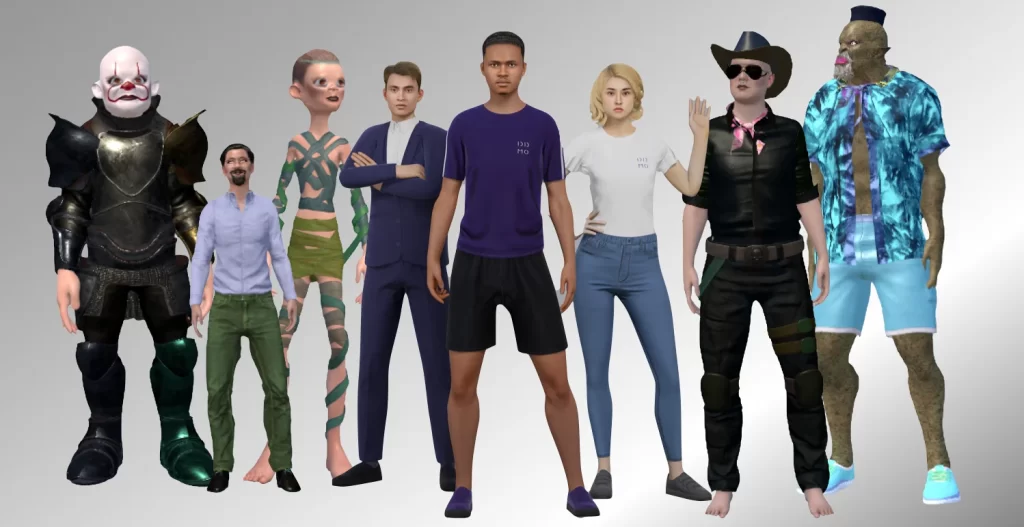
Digital human avatar technology provider Didimo Inc. launched Popul8. It is a generative AI tool that reduces the time required to create extremely lifelike, generative ai characters for games to its fraction with users having full control over the process.
The tool allows for consistent designs, users can upload template characters from any game to ensure their new avatars match its aesthetic style and make further tweaks as per their personal preferences.
Popul8 also enables “batch creation,” to populate entire worlds or levels with non-playable characters. Popul8 allows users to create hundreds of varied characters at once. Each character will have its own traits chosen randomly.
Another wonderful example is CharacterGPT developed jointly by Alethea AI and Polygon Labs. Under this AI-powered NFT project, users can create their avatars through text-based prompts and turn them into NFTs.
It makes character creation so easy that anyone can create fully interactive and intelligent Generative AI characters and train them. Moreover, they can trade these NFTs on Polygon, all that is needed is a single-line prompt in natural language.
These real-world examples vividly illustrate how generative AI is already reshaping the character creation landscape, providing unprecedented levels of personalization and immersion.
With its ability to generate unique and diverse avatars, generative AI stands at the forefront of revolutionizing character creation in gaming, promising highly immersive and captivating gaming experiences.
Personalized Gaming Characters: Enhancing Player Experience
In the vast and immersive world of gaming, one key element that has really captured the attention of players is the ability to create personalized avatars. They make gaming highly resonating and relatable as if we are inside the game ourselves taking the challenges and obstacles and fighting the enemy.
Such digital representations of ourselves within the game enhance our sense of identity and play a crucial role in shaping our overall gaming experience.
With the emergence of generative AI, the landscape of personalized gaming avatars has witnessed a revolutionary transformation. In this section, we will explore the importance of customized gaming avatars, the impact of generative AI on player satisfaction and engagement, and the ethical considerations and challenges associated with this technological advancement.
Importance of Personalized Gaming Avatars for Player Immersion and Identity Expression:
Personalized gaming avatars hold immense significance in enhancing player immersion and identity expression. When we can design avatars that closely resemble our own physical features and reflect our unique style, it creates a sense of familiarity and personal connection to the virtual world. This connection allows us to immerse ourselves in the game fully and authentically embody our in-game personas.
Additionally, personalized avatars provide a powerful platform for self-expression, enabling us to showcase our individuality, cultural background, and personal preferences. By having the freedom to customize our avatars, we can create a more inclusive and diverse gaming environment that celebrates the rich tapestry of player identities.
Impact of Generative AI on Player Satisfaction and Engagement:
Generative AI has had a profound impact on player satisfaction and engagement by revolutionizing the way personalized avatars are created. Unlike traditional methods that offer limited customization options, generative AI empowers developers to create highly detailed and unique avatars that truly reflect the individuality of each player.
With its ability to generate diverse combinations of facial features, body types, and even behavioral traits, generative AI brings a new level of personalization to gaming. This heightened customization leads to increased player satisfaction and engagement as gamers can create avatars that closely match their desired appearance and reflect their inner selves.
By aligning the avatars with the player’s vision, generative AI enhances the overall gaming experience and fosters a stronger connection between the player and the virtual world.
Ethical Considerations and Challenges:
While the advancements in generative AI for character creation bring remarkable benefits, they also raise important ethical considerations and challenges.
The Matter of Consent and Privacy
Ethical concerns arise in terms of ownership and consent when generative AI is used to generate avatars that resemble real individuals without their explicit permission. Additionally, privacy concerns may emerge if personal data is used in the generative AI algorithms without proper safeguards.
It is crucial for developers and AI practitioners to prioritize user consent, data protection, and respect for individual rights throughout the character creation process.
Potential Issues Regarding Diversity, Representation, and Bias in Generative AI Algorithms:
Generative AI algorithms are susceptible to biases and may inadvertently perpetuate stereotypes or exclude certain demographics. This can result in a lack of diversity and representation in the generated avatars, leading to alienation and marginalization of players.
Strategies and Approaches to Address Ethical Challenges and Ensure Inclusivity:
To address ethical challenges, developers should adopt a transparent and accountable approach. They should provide clear explanations of how generative AI is used in character creation, obtain informed consent from players, and allow for customization options that prioritize user preferences.
Additionally, developers should actively seek diverse perspectives and engage in ongoing dialogue with the gaming community to ensure inclusivity and representation. Regular audits and reviews of the generative AI algorithms can help identify and rectify any biases that may arise.
Personalized gaming avatars, powered by generative AI, have become a cornerstone of player immersion, engagement, and self-expression. By enabling players to create avatars that closely resemble their desired appearance and identity, generative AI transforms the gaming experience into a highly personalized and inclusive journey.
However, it is crucial to navigate the ethical considerations and challenges associated with this technology. By prioritizing user consent, diversity, and representation, developers can harness the full potential of generative AI while ensuring a fair and inclusive gaming environment. With ongoing advancements, the future of personalized gaming avatars looks promising, promising richer and more immersive gaming experiences for players worldwide.
The Future of Character Creation in Gaming
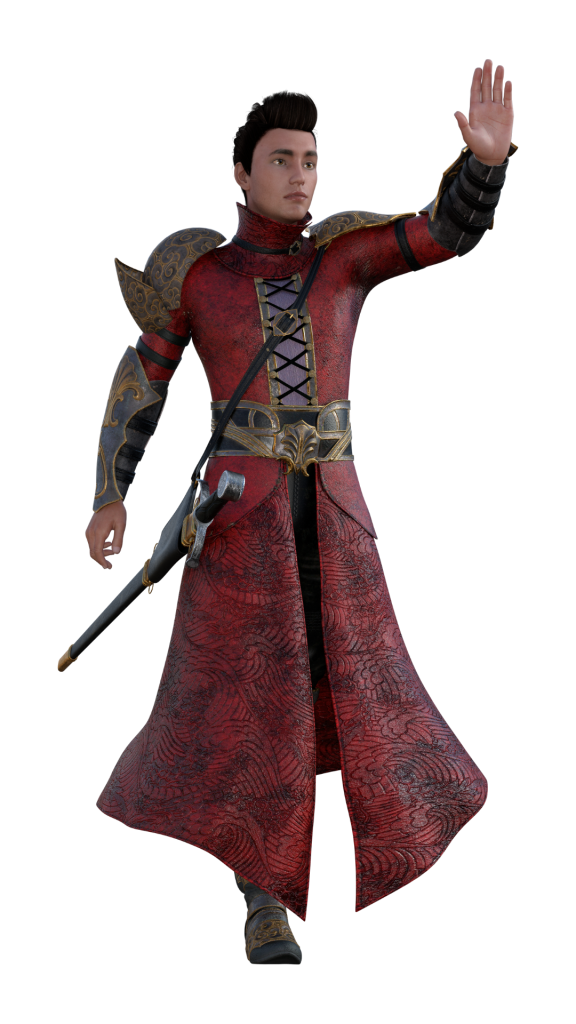
Looking ahead, the future of character creation in gaming holds exciting prospects with the continued advancements in generative AI.
We can anticipate more sophisticated algorithms that generate avatars with even greater realism, attention to detail, and nuanced behaviors. Imagine avatars that exhibit complex emotions, dynamic facial expressions, and fluid movements, all created by generative AI.
Furthermore, with the integration of machine learning, generative AI could learn from player preferences and adapt in real-time, allowing for personalized experiences that evolve alongside the player’s journey.
Predictions for How Generative AI Will Shape the Gaming Industry:
Generative AI is poised to reshape the gaming industry in profound ways. The level of personalization and immersion offered by generative AI-powered character creation will become a standard expectation for players.
Games will not only provide a vast array of customization options but also generate avatars that closely resemble players’ physical appearances, personalities, and preferences. This heightened level of player agency and connection will result in more captivating and immersive gaming experiences, fostering greater player loyalty and engagement.
Potential Challenges and Opportunities for Developers and Players in the Future:
As generative AI becomes more prevalent in character creation, developers will face challenges in maintaining a balance between automation and player creativity. Striking the right balance will be crucial to avoid repetitive or cookie-cutter designs while ensuring that players can still express their unique visions.
Additionally, the ethical considerations surrounding generative AI, such as biases and privacy concerns, will require ongoing attention and proactive measures from developers.
However, the future also presents abundant opportunities. Developers will have the chance to push the boundaries of creativity and innovation by leveraging generative AI algorithms to design captivating and diverse game worlds.
Players will enjoy ever-expanding possibilities for personalization, enabling them to craft avatars that are true reflections of their imagination and individuality. The collaboration between developers and players, fueled by generative AI, will drive the evolution of character creation and redefine the boundaries of the gaming experience.
Conclusion
In conclusion, the advent of generative AI has sparked a revolution in character creation, offering players unparalleled opportunities for personalization and immersion. Through generative AI, gaming avatars can transcend the limitations of traditional methods and become authentic representations of players’ identities and aspirations. The impact of generative AI extends beyond individual player experiences, shaping the future of the gaming industry as a whole.
With advancements in generative AI, we can look forward to even more realistic, diverse, and customizable avatars. The gaming landscape will be transformed by dynamic generative ai characters that evolve, interact, and respond to players in unprecedented ways. However, it is crucial to navigate the ethical challenges and ensure that inclusivity, representation, and player consent are at the forefront of these developments.
The future of character creation through generative AI holds immense potential. It is a journey of continuous innovation, collaboration, and responsible implementation. As developers and players embrace the possibilities, we can expect a gaming experience that is truly immersive, personal, and memorable. With generative AI at the helm, the future of character creation in gaming is bright, promising to reshape how we engage with virtual worlds and unlock new frontiers of player expression and enjoyment.
The post Character Creation Revolution: Generative AI Characters and Personalized Gaming Avatars appeared first on Queppelin.





